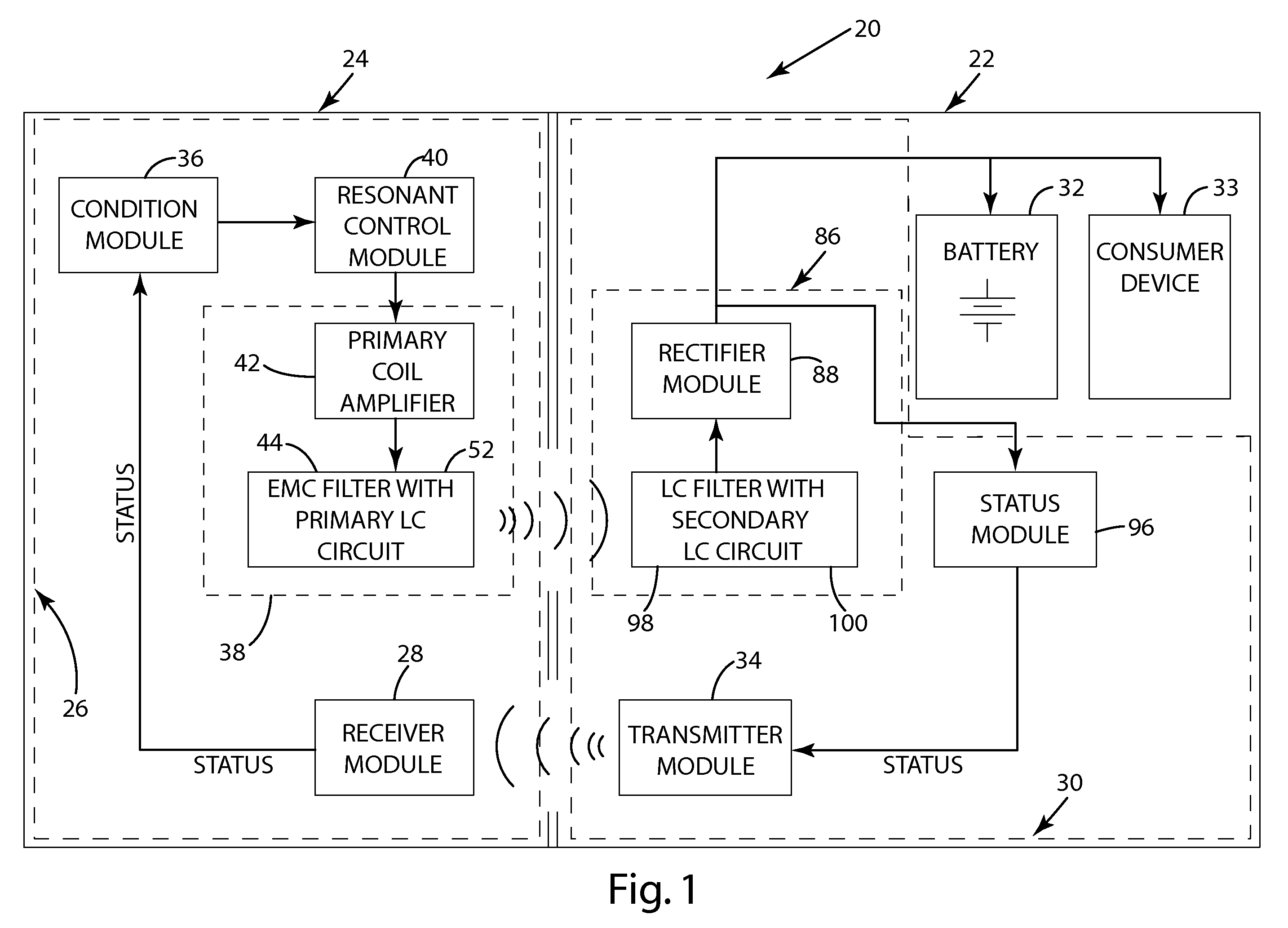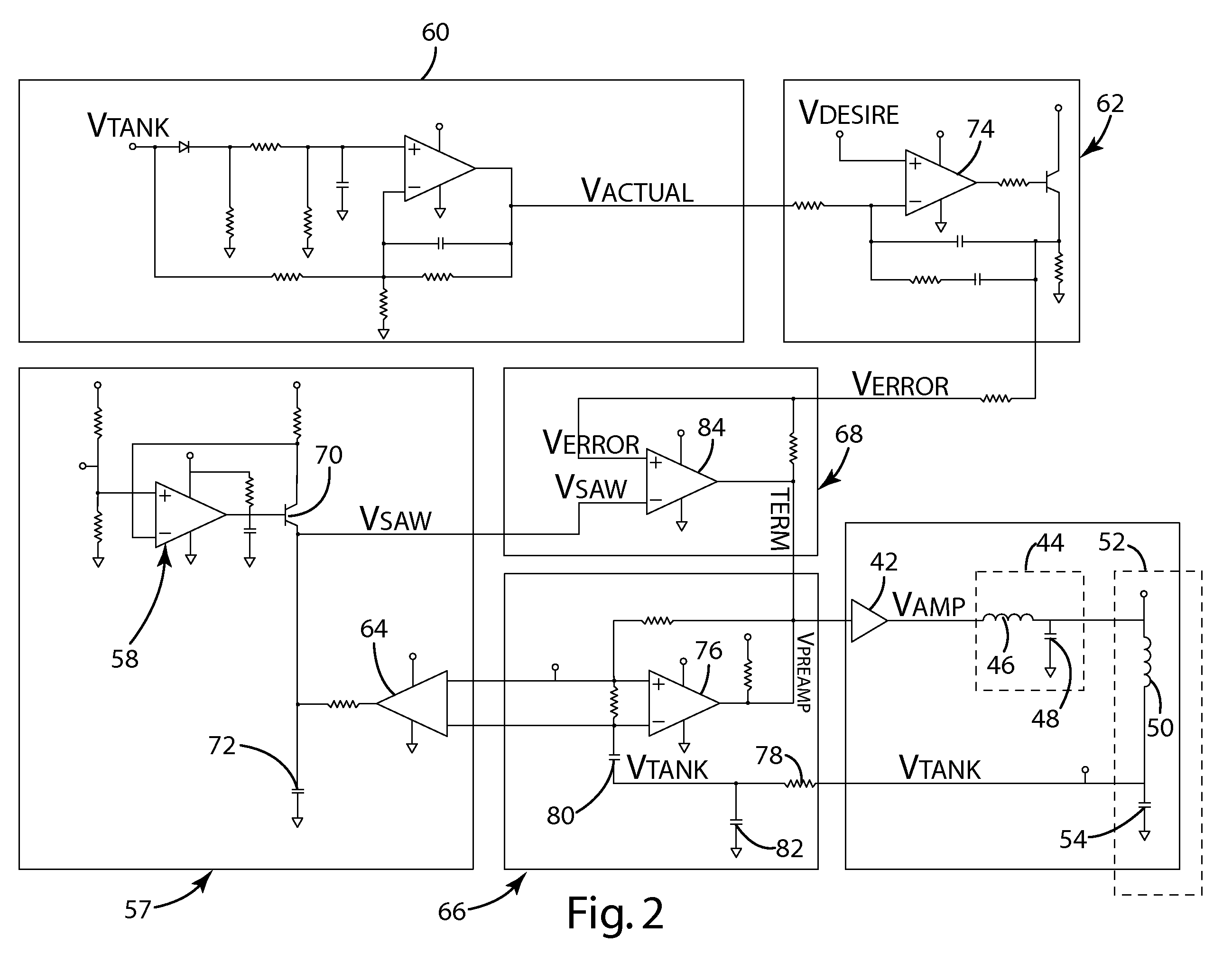System for inductive power transfer
a technology of inductive power transfer and synchronous transmission, which is applied in the direction of exchanging data chargers, electrical generators, transportation and packaging, etc., can solve the problems of reducing the efficiency of the primary coil in transferring power to the secondary coil, affecting the efficiency of the primary affecting the efficiency of the secondary coil in transferring power, etc., to achieve sufficient operation of the device, reduce the undesired electromagnetic emissions generated by the power signal and
- Summary
- Abstract
- Description
- Claims
- Application Information
AI Technical Summary
Benefits of technology
Problems solved by technology
Method used
Image
Examples
Embodiment Construction
[0013]Referring to the Figures, wherein like numerals indicate corresponding parts throughout the several views, an inductive power transfer system is generally shown for adjusting the conduction angle of an oscillating circuit. Referring to FIG. 1, the inductive power transfer system 20 includes a primary unit 24 and a secondary unit 22. The primary unit 24 includes a synchronous drive system 26 and the secondary unit 22 includes a secondary receiving system 30. The synchronous drive system 26 inductively powers the secondary receiving system 30, as discussed in greater detail below. The synchronous drive system 26 may further include a receiver module 28 that communicates with the secondary receiving system 30 to receive a status signal (STATUS) indicating power conditions within the secondary unit 22. The secondary unit 22 may include a battery 32 and / or a consumer device that can be charged and / or powered by the secondary receiving system 30. The secondary unit 22 may further in...
PUM
| Property | Measurement | Unit |
|---|---|---|
| voltage | aaaaa | aaaaa |
| resonance frequency | aaaaa | aaaaa |
| source voltage | aaaaa | aaaaa |
Abstract
Description
Claims
Application Information
 Login to View More
Login to View More - R&D
- Intellectual Property
- Life Sciences
- Materials
- Tech Scout
- Unparalleled Data Quality
- Higher Quality Content
- 60% Fewer Hallucinations
Browse by: Latest US Patents, China's latest patents, Technical Efficacy Thesaurus, Application Domain, Technology Topic, Popular Technical Reports.
© 2025 PatSnap. All rights reserved.Legal|Privacy policy|Modern Slavery Act Transparency Statement|Sitemap|About US| Contact US: help@patsnap.com



